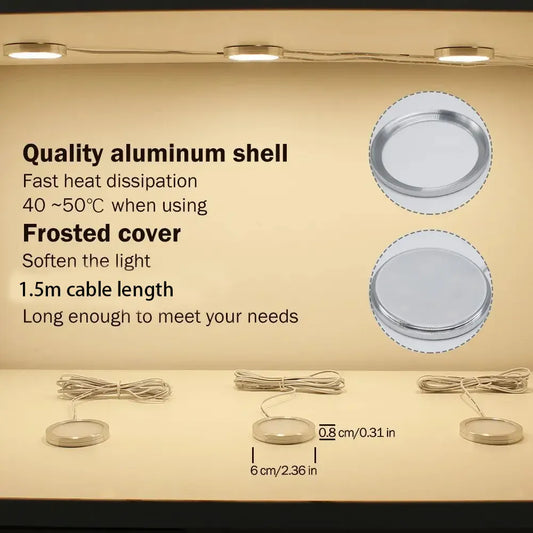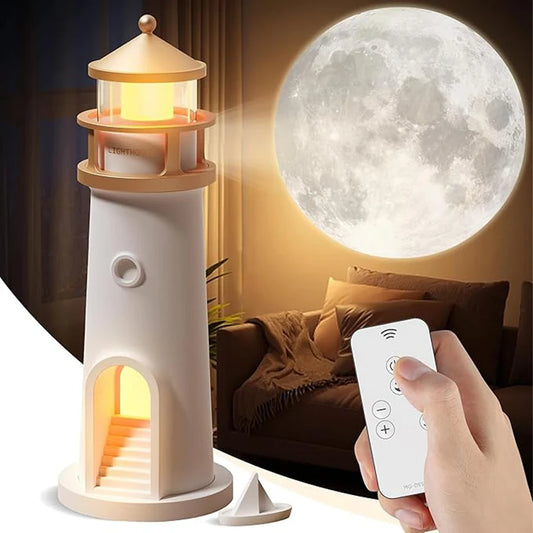
What Wattage Should Under Cabinet Lights Be?
Share
Table of Contents
- Introduction
- Understanding Wattage and Lumens
- The Role of Wattage in Under Cabinet Lighting
- Factors Influencing Wattage Selection
- Calculating the Right Wattage
- Practical Recommendations
- Conclusion
- FAQs
Introduction
Choosing the right wattage for under cabinet lighting is crucial for achieving the perfect balance of illumination, energy efficiency, and kitchen functionality. While wattage indicates the energy consumption of a light source, the brightness is measured in lumens. This guide will walk you through the factors that influence wattage selection, backed by expert opinions, research, and practical recommendations to help you make an informed decision.
Further reading:
Understanding Wattage and Lumens

Wattage measures the energy consumption of a light bulb, while lumens measure the brightness it produces. Higher wattage does not always mean brighter light; modern lighting technologies like LEDs provide more lumens per watt, making them more efficient.
| Lighting Type | Recommended Wattage | Lumens per Watt | Typical Lumen Output |
|---|---|---|---|
| LED | 4-10 watts | 80-100 lm/W | 320-1000 lumens |
| Fluorescent | 8-20 watts | 50-70 lm/W | 400-1400 lumens |
| Xenon | 15-25 watts | 15-20 lm/W | 225-500 lumens |
| Halogen | 20-50 watts | 10-20 lm/W | 200-1000 lumens |
The Role of Wattage in Under Cabinet Lighting
1. Task Lighting Requirements
Under cabinet lighting primarily serves as task lighting, illuminating workspaces like countertops where activities such as food preparation, cooking, and reading recipes occur. The Illuminating Engineering Society (IES) recommends a minimum of 300 lumens per square foot for task lighting in kitchens. The wattage you choose should produce enough lumens to meet this requirement.
2. Energy Efficiency
Energy efficiency is a significant consideration when choosing the wattage for under cabinet lights. LEDs are particularly advantageous as they deliver more lumens per watt compared to traditional bulbs. For example, a 4-10 watt LED light can produce the same brightness as a 40-60 watt incandescent bulb, significantly reducing energy consumption and lowering utility bills.
3. Compatibility and Safety
Selecting the correct wattage is also about ensuring compatibility with your home’s electrical system. The National Electrical Code (NEC) suggests that the total wattage on a single circuit should not exceed 80% of the circuit’s capacity to prevent overheating and potential fire hazards.
Factors Influencing Wattage Selection

1. Type of Light Fixture
Different types of under cabinet light fixtures require different wattages:
- LED Strip Lights: Typically need 4-10 watts per foot, offering high lumens (80-100 lm/W) and providing uniform illumination.
- LED Puck Lights: Usually require 2-3 watts per light, delivering around 150-200 lumens each for more focused lighting.
-
LED Light Bars: Typically require 8-10 watts, producing 80-100 lumens per watt, making them ideal for providing bright, energy-efficient lighting with even distribution across your workspace.
2. Desired Brightness (Lumens)
To determine the total lumens needed for your kitchen, multiply the recommended lumens per square foot by the area of your countertop. For example, if your kitchen requires 300 lumens per square foot and the countertop area is 10 square feet, you’ll need 3,000 lumens. Based on the efficiency of your lighting source, calculate the necessary wattage to achieve this brightness.
3. Color Temperature and CRI
The effectiveness of your lighting also depends on color temperature (measured in Kelvin) and Color Rendering Index (CRI). A color temperature between 3000K-4000K is ideal for kitchen tasks, providing a balance between warm and cool light. Higher CRI (90+) ensures accurate color representation, essential in food preparation areas.
Calculating the Right Wattage
Follow these steps to determine the appropriate wattage for your under cabinet lighting:
1. Determine Total Lumens Needed:
-
Multiply the lumens per square foot by the total square footage of your workspace.
-
Example: 300 lumens/sq ft * 10 sq ft = 3,000 lumens.
2. Identify Lumens per Watt:
-
Check the efficiency of your chosen light source. LEDs typically offer 80-100 lumens per watt.
- Example: For LEDs providing 100 lumens per watt, divide the total lumens needed by the lumens per watt.
3. Calculate Total Wattage:
-
Divide the total lumens by the lumens per watt to determine the required wattage.
- Example: 3,000 lumens / 100 lumens per watt = 30 watts.
4. Verify Circuit Capacity:
-
Ensure that the total wattage does not exceed 80% of your circuit’s capacity.
- Example: For a 15-amp circuit (1800 watts capacity), 80% capacity is 1440 watts.
Practical Recommendations

1. LED Strip Lights
For a 10-square-foot countertop needing 3,000 lumens, a 30-watt LED strip light setup is sufficient. This setup is not only energy-efficient but also provides even illumination across the entire workspace.
2. LED Puck Lights
For focused lighting, use LED puck lights that produce around 200 lumens each. You would need approximately 15 puck lights, each consuming around 3 watts, totaling 45 watts for 3,000 lumens.
3. LED Light Bars
If opting for LED light bars, choose fixtures that provide around 500-600 lumens per bar. You would need approximately five to six fixtures, each consuming about 8-10 watts, totaling 40-60 watts to achieve the necessary brightness of 3,000 lumens.
Conclusion
Selecting the right wattage for under cabinet lighting involves balancing brightness, energy efficiency, and compatibility with your electrical system. LEDs offer the best combination of these factors, allowing you to achieve optimal illumination with lower energy consumption. By focusing on lumens rather than wattage alone, you can ensure your kitchen is well-lit, functional, and energy-efficient.
Explore our range of motion sensor under cabinet lighting solutions at Lumaz to find the perfect fit for your kitchen.
Further reading:
- The Ultimate Guide to Under Cabinet Lighting
- How to Choose the Best Under Cabinet Lighting for Your Kitchen
- Lumens vs Watts, Which is more important?
- What Wattage Should Puck Lights Be?
FAQs
Is higher wattage always better for under cabinet lighting?
No, higher wattage isn’t always better. Wattage measures energy use, not brightness. Focus on lumens, which indicate brightness. LEDs are more efficient, offering more lumens per watt, so a lower wattage LED can produce the same brightness as a higher wattage incandescent bulb, making them a smarter, energy-saving choice.
Can I mix different types of under cabinet lighting?
Yes, you can mix lighting types. For example, use LED strips for even task lighting and LED puck lights for accent lighting. This combination allows you to customize your kitchen’s lighting for different tasks and moods, ensuring a functional and stylish space.
How do I calculate the total wattage needed for my kitchen?
To calculate total wattage, determine the lumens needed based on your kitchen’s size. Divide the total lumens by the lumens per watt of your lights. For instance, if you need 3,000 lumens and your LEDs offer 100 lumens per watt, you’ll need about 30 watts in total. Ensure your total wattage stays within safe limits for your circuit.




























 />
/>
 />
/>
 />
/>
 />
/>
 />
/>